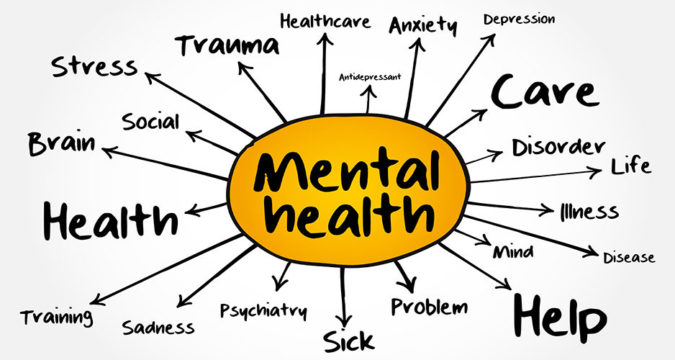Classes of mental illness
The primary classes of mental illness include:
1. Neurodevelopmental disorders: These encompass a wide range of problems that typically manifest in infancy or childhood, often before a child begins formal schooling. Examples include autism spectrum disorder, attention-deficit/hyperactivity disorder (ADHD), and learning disorders.
2. Schizophrenia spectrum and other psychotic disorders: Psychotic disorders involve a detachment from reality, such as delusions, hallucinations, disorganized thinking, and speech. Schizophrenia is a prominent example, although other disorder categories can also feature reality detachment.
3. Bipolar and related disorders: This class includes disorders characterized by alternating episodes of mania (excessive activity, energy, and excitement) and depression.
4. Depressive disorders: These encompass disorders that affect emotional well-being, such as the level of sadness and happiness, and can disrupt daily functioning. Examples include major depressive disorder and premenstrual dysphoric disorder.
5. Anxiety disorders: Anxiety is an emotion marked by anticipation of future danger or misfortune, accompanied by excessive worrying. It may involve behavioural patterns aimed at avoiding anxiety-inducing situations. This class includes generalized anxiety disorder, panic disorder, and phobias.
6. Obsessive-compulsive and related disorders: These disorders involve preoccupations or obsessions, as well as repetitive thoughts and actions. Examples include obsessive-compulsive disorder, hoarding disorder, and trichotillomania (hair-pulling disorder).
7. Trauma- and stressor-related disorders: These are adjustment disorders in which a person struggles to cope during or after a stressful life event. Examples include post-traumatic stress disorder (PTSD) and acute stress disorder.
8. Dissociative disorders: These disorders disrupt a person’s sense of self, as observed in dissociative identity disorder and dissociative amnesia.
9. Somatic symptom and related disorders: Individuals with these disorders experience physical symptoms causing significant emotional distress and functional impairments. These symptoms may or may not be associated with diagnosed medical conditions, but the reaction to the symptoms is abnormal. Disorders in this class include somatic symptom disorder, illness anxiety disorder, and factitious disorder.
10. Feeding and eating disorders: These disorders involve disturbances in eating patterns that impact nutrition and health, such as anorexia nervosa and binge-eating disorder.
11. Elimination disorders: These disorders pertain to inappropriate elimination of urine or stool, either unintentionally or deliberately. Bed-wetting (enuresis) is an example.
12. Sleep-wake disorders: This class comprises sleep disorders severe enough to require clinical attention, including insomnia, sleep apnoea, and restless legs syndrome.
13. Sexual dysfunctions: These disorders involve problems with sexual response, such as premature ejaculation and female orgasmic disorder.
14. Gender dysphoria: This refers to the distress accompanying a person’s expressed desire to be of a different gender.
15. Disruptive, impulse-control, and conduct disorders: These disorders entail difficulties with emotional and behavioral self-control, such as kleptomania or intermittent explosive disorder.
16. Substance-related and addictive disorders: This class encompasses issues associated with excessive use of substances like alcohol, caffeine, tobacco, and drugs. It also includes gambling disorder.
17. Neurocognitive disorders: These disorders impair cognitive abilities and reasoning. They are acquired rather than developmental and can arise from conditions or diseases such as traumatic brain injury or Alzheimer’s disease.
18. Personality disorders: Personality disorders involve enduring patterns of emotional instability and unhealthy behavior that lead to problems in life and relationships. Examples include borderline, antisocial, and narcissistic personality disorders.
19. Paraphilic disorders: These disorders involve sexual interests that cause personal distress, impairment, or harm to others. Examples include sexual sadism disorder, voyeuristic disorder, and pedophilic disorder.
20. Other mental disorders: This class includes mental disorders resulting from other medical conditions or those that don’t meet the full criteria for any of the above disorders.


